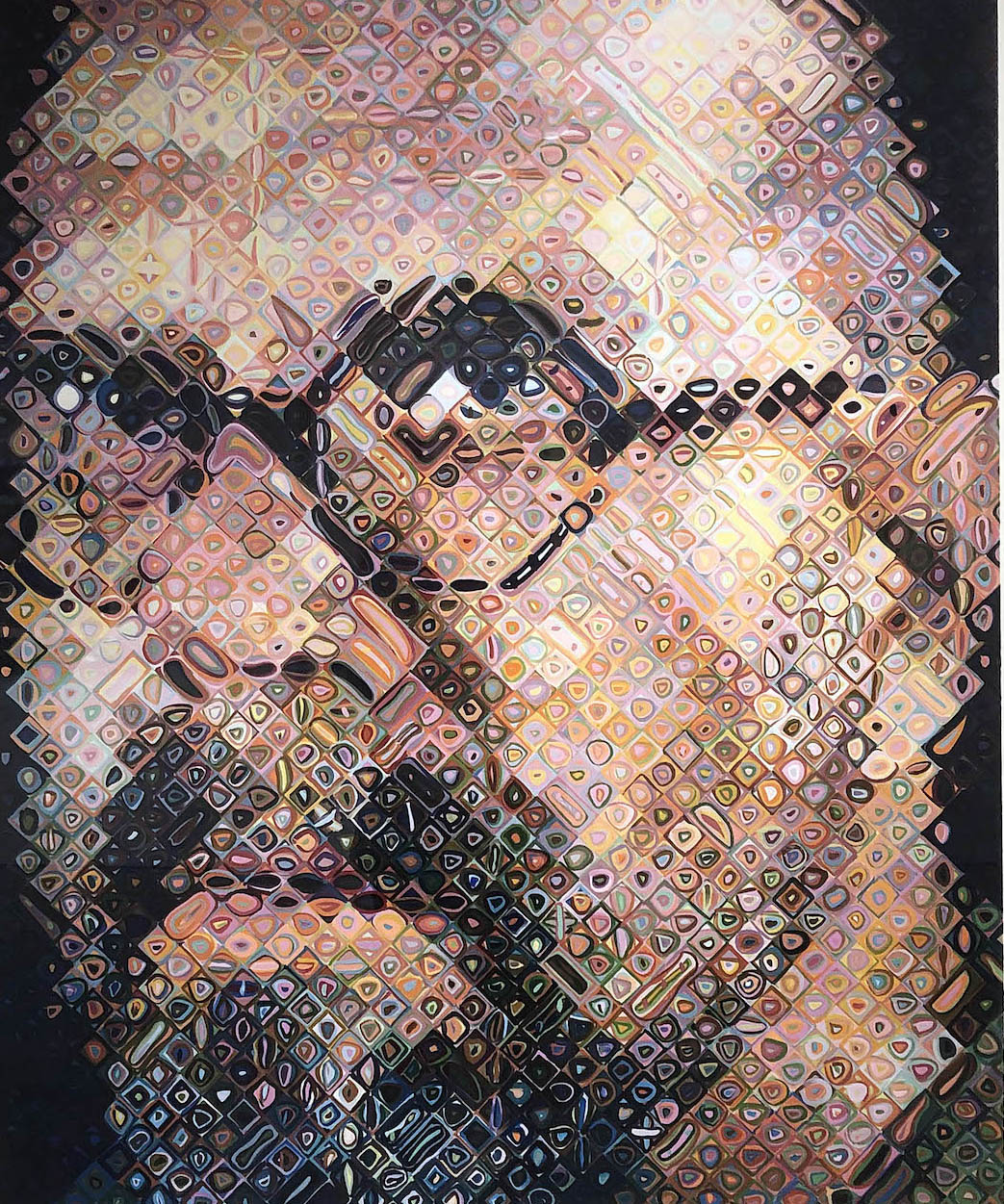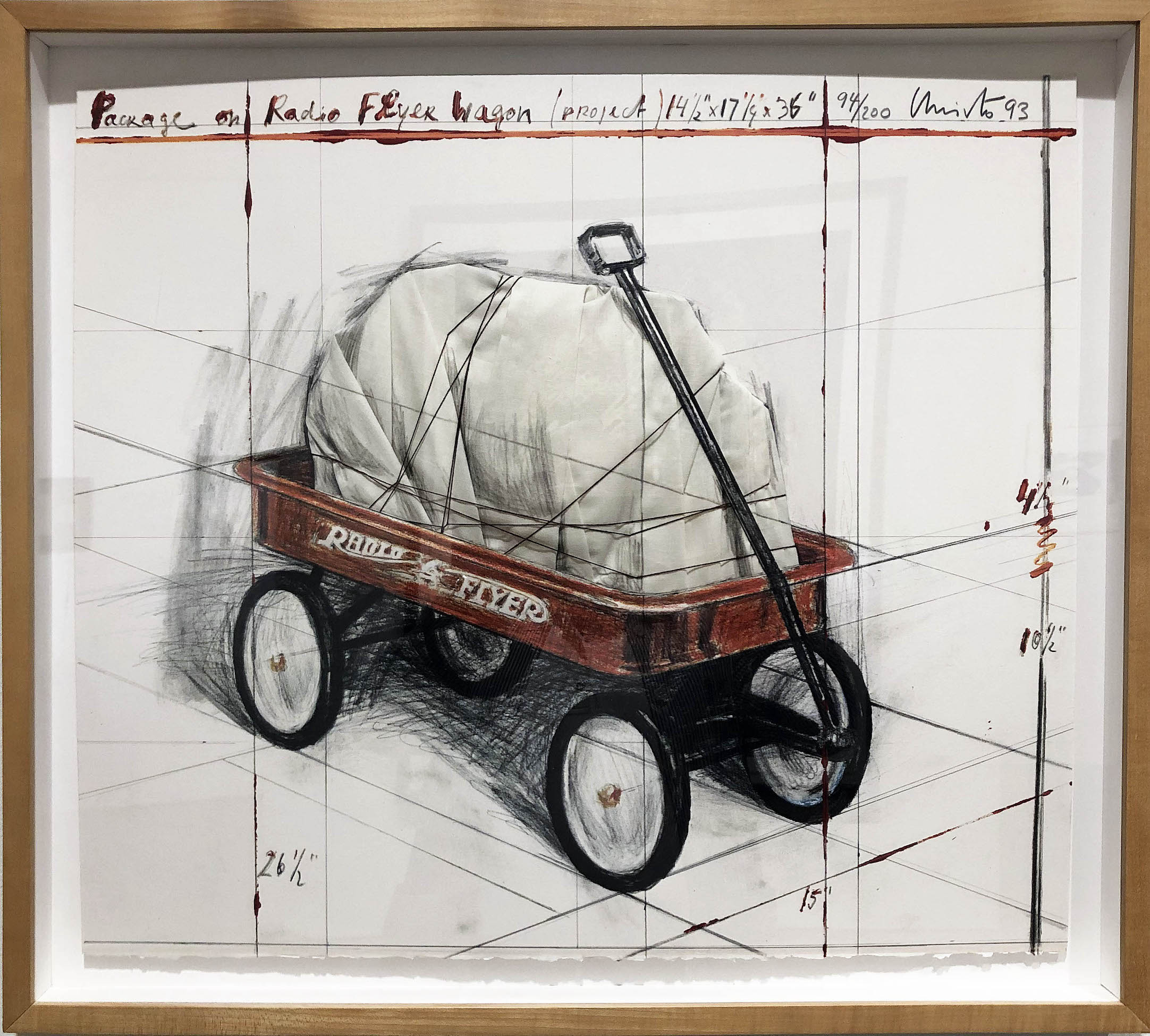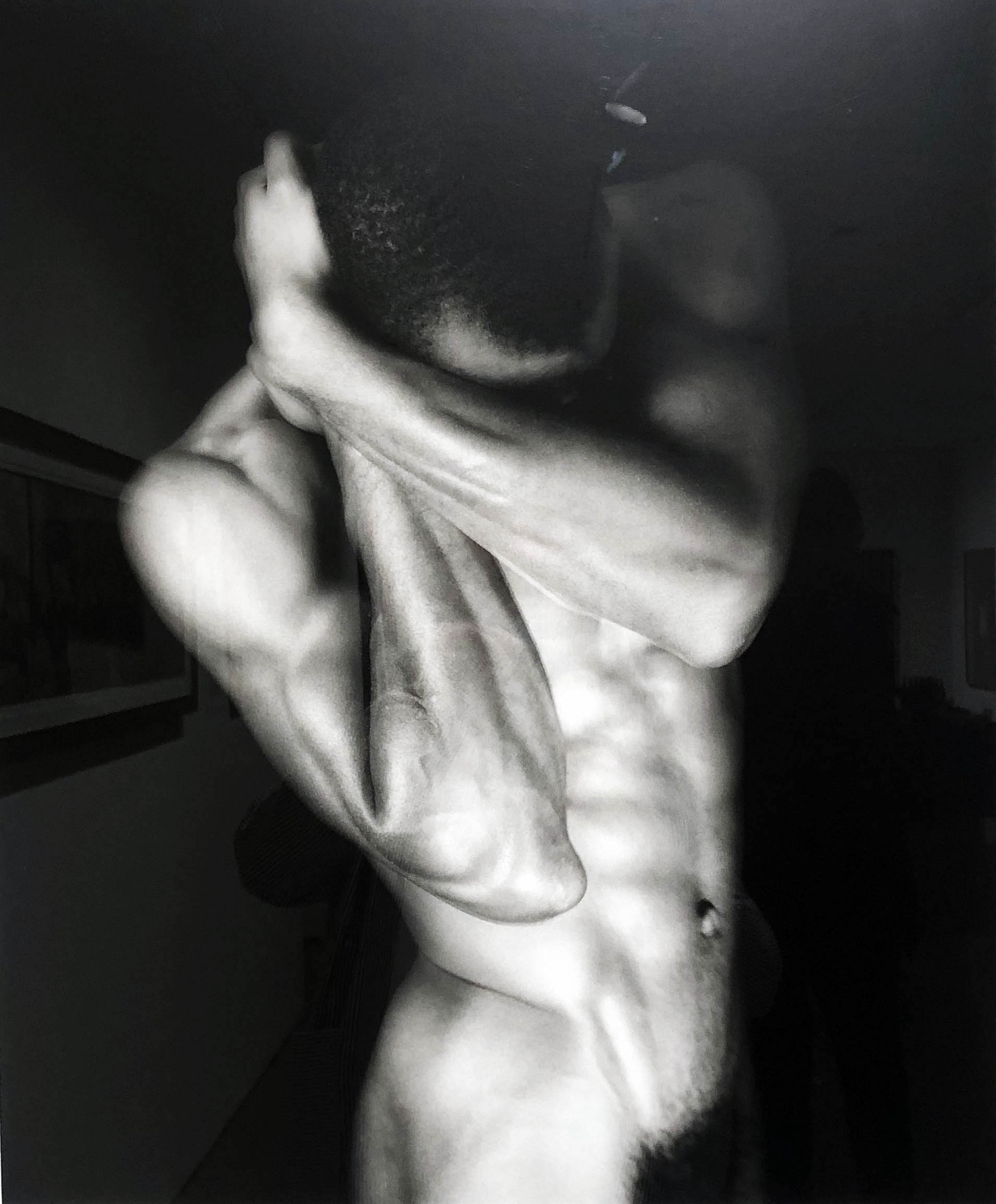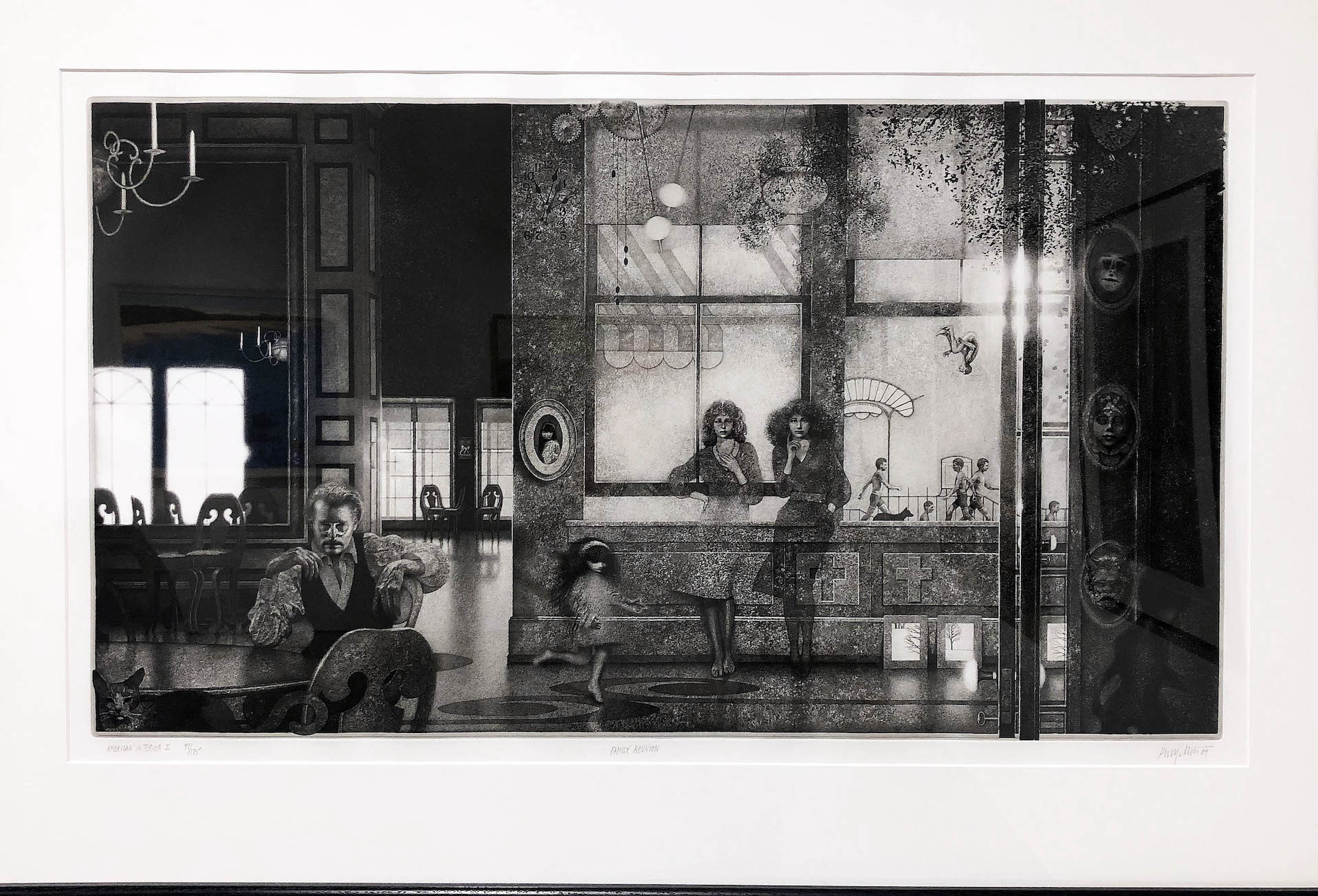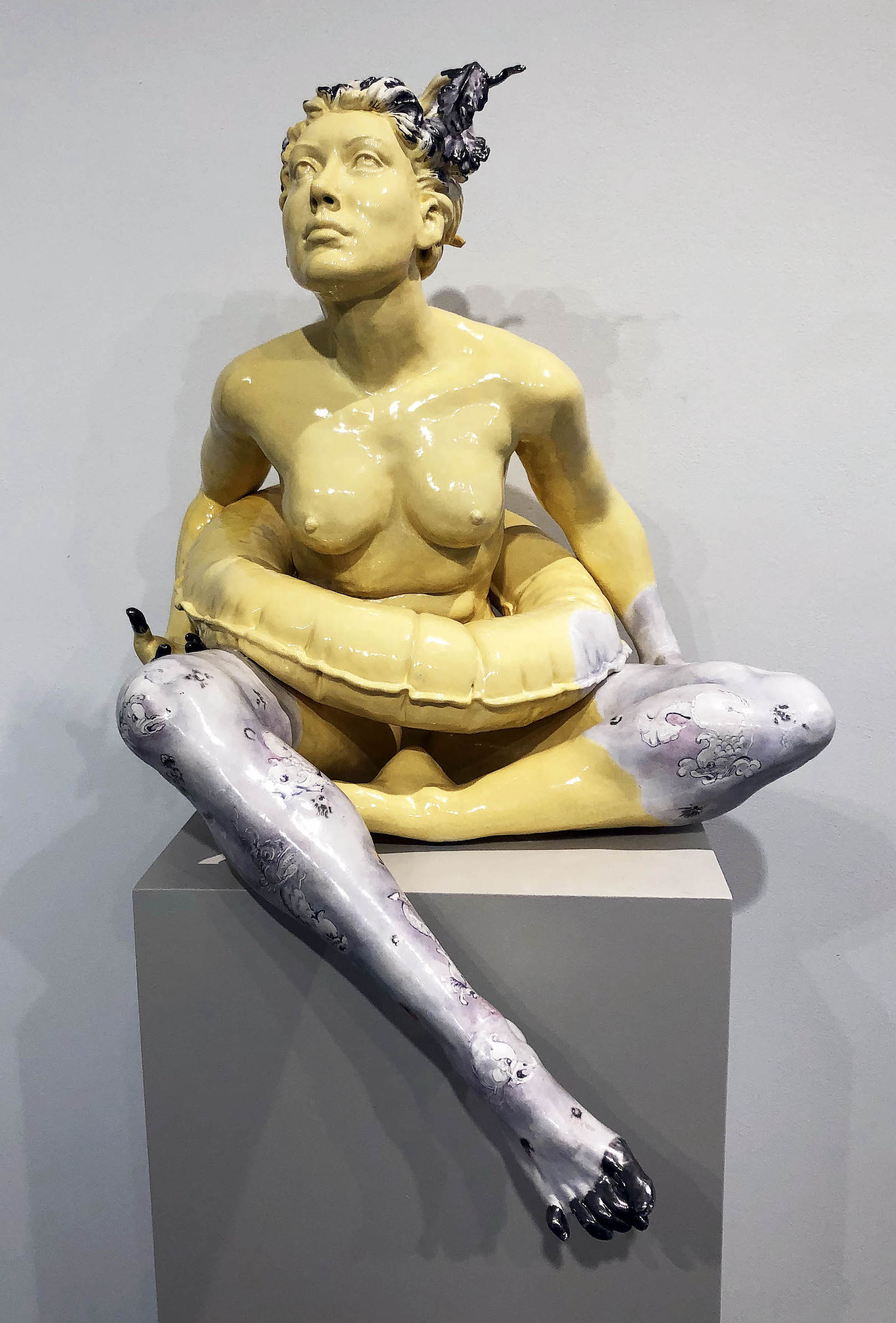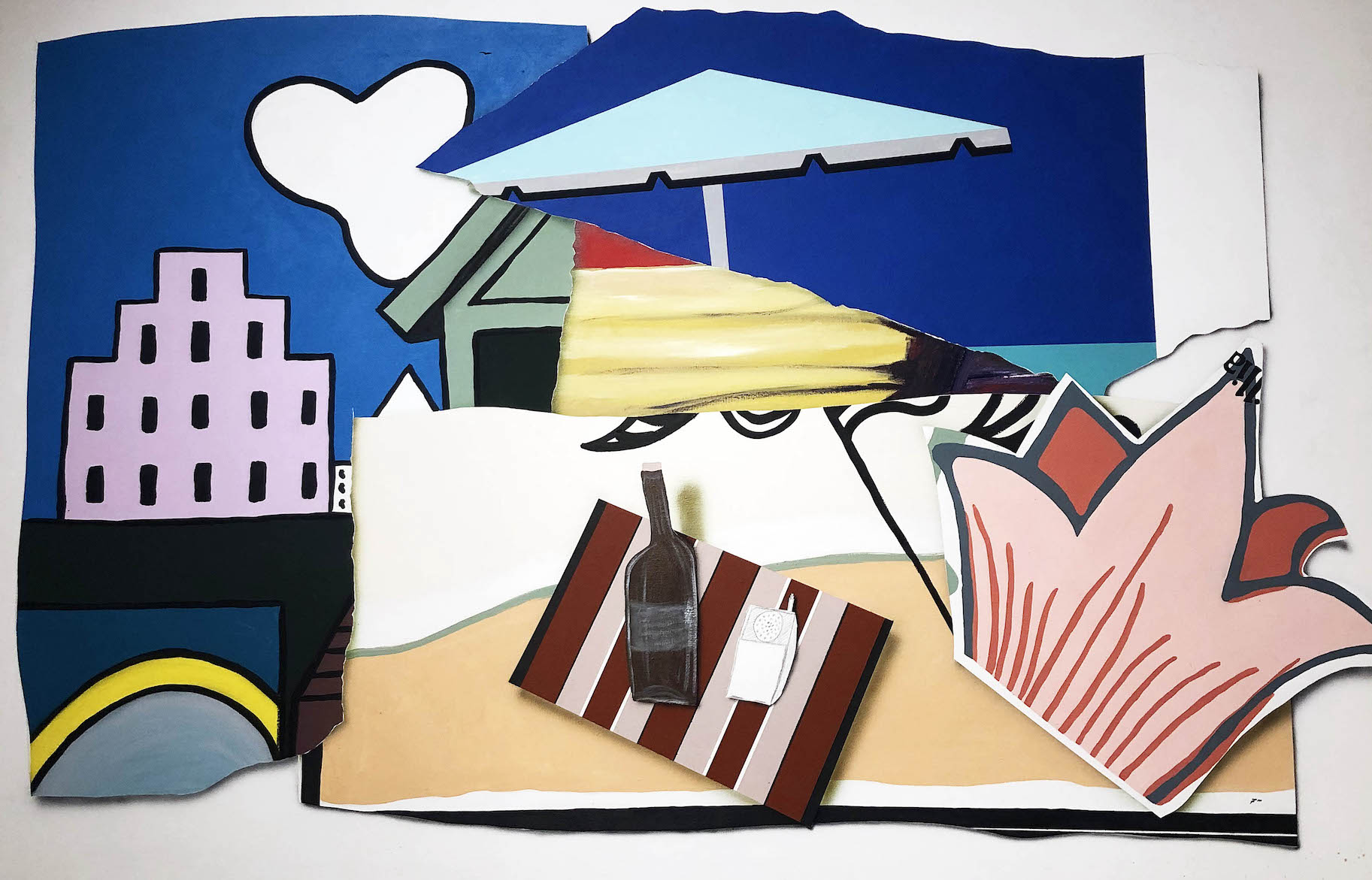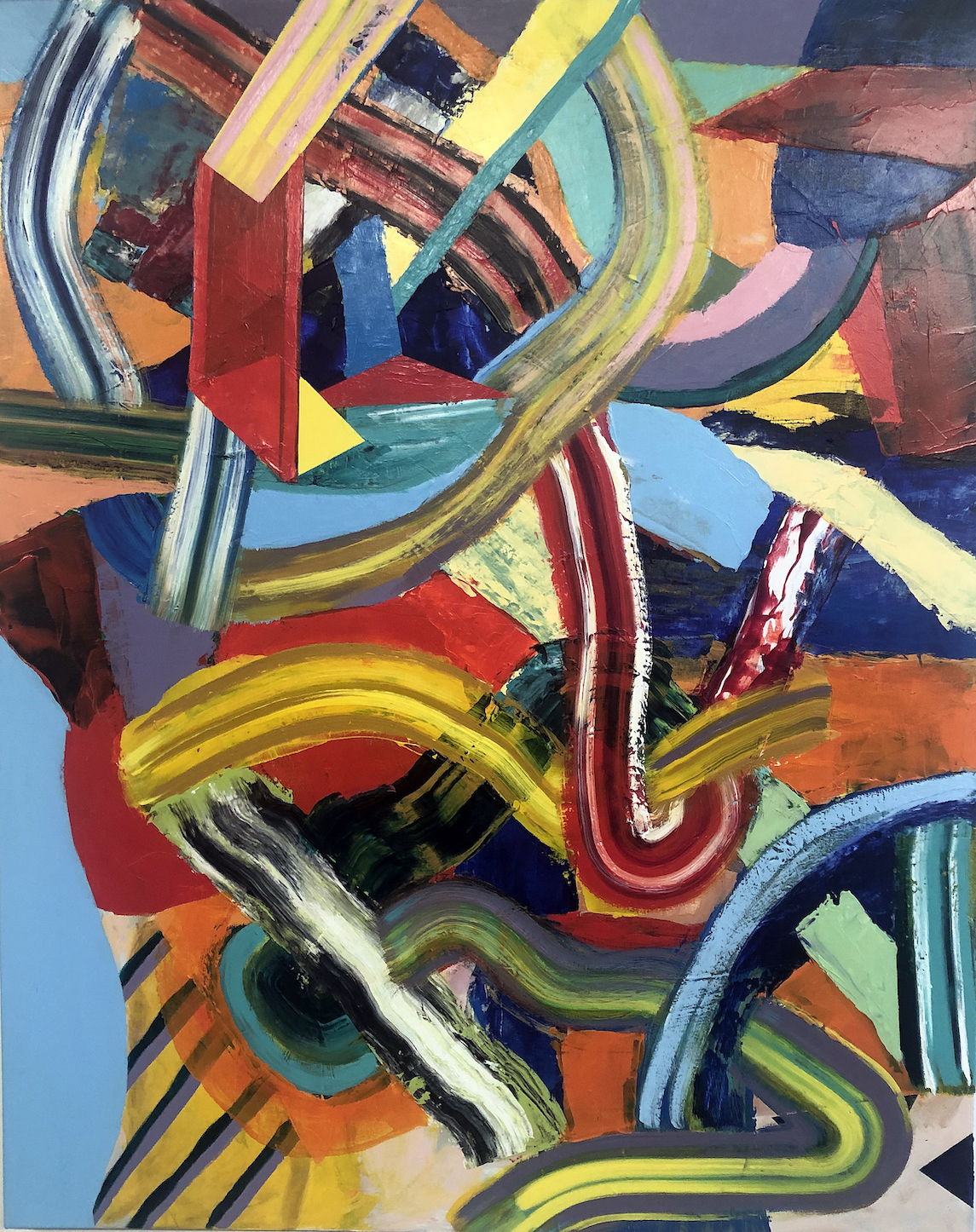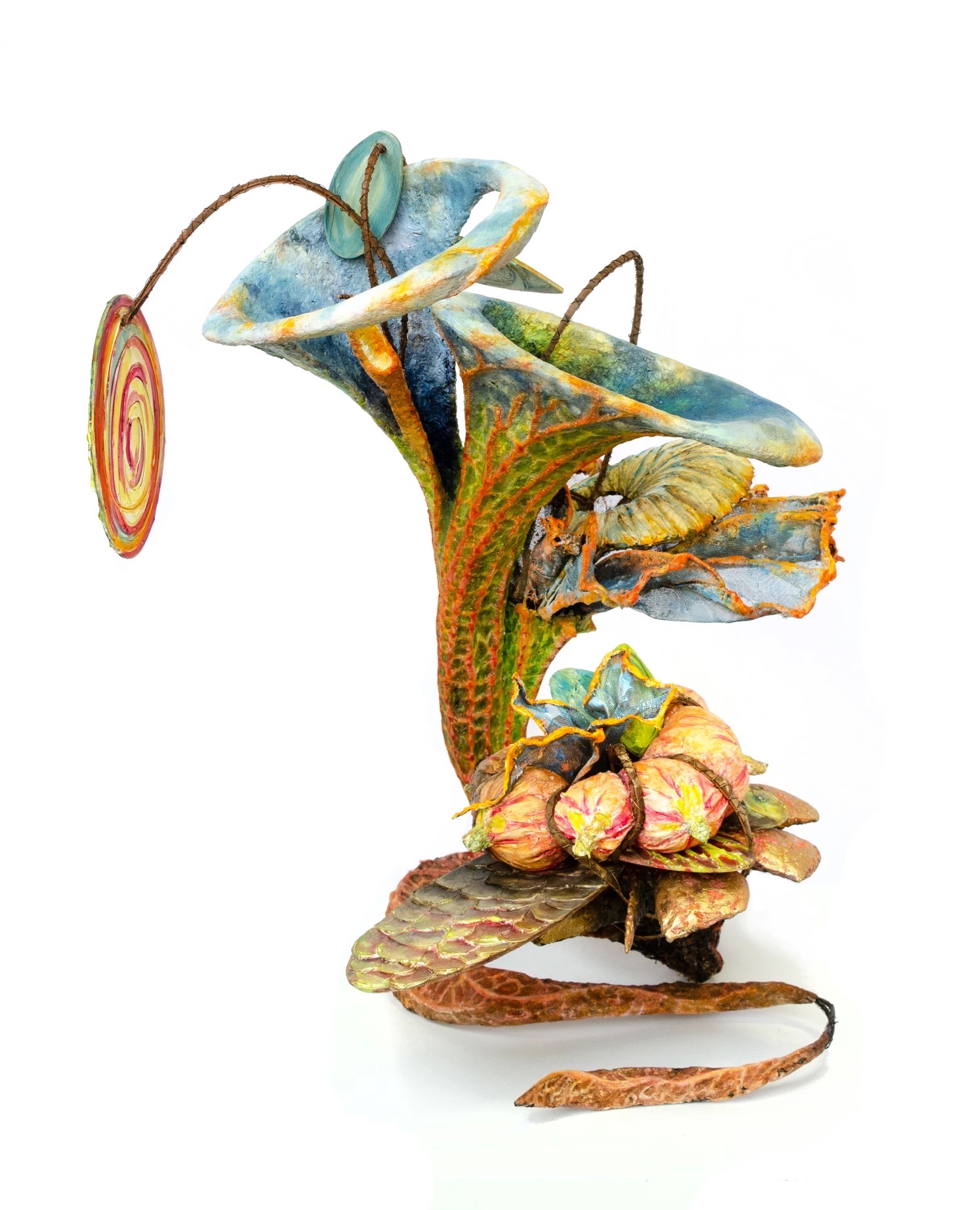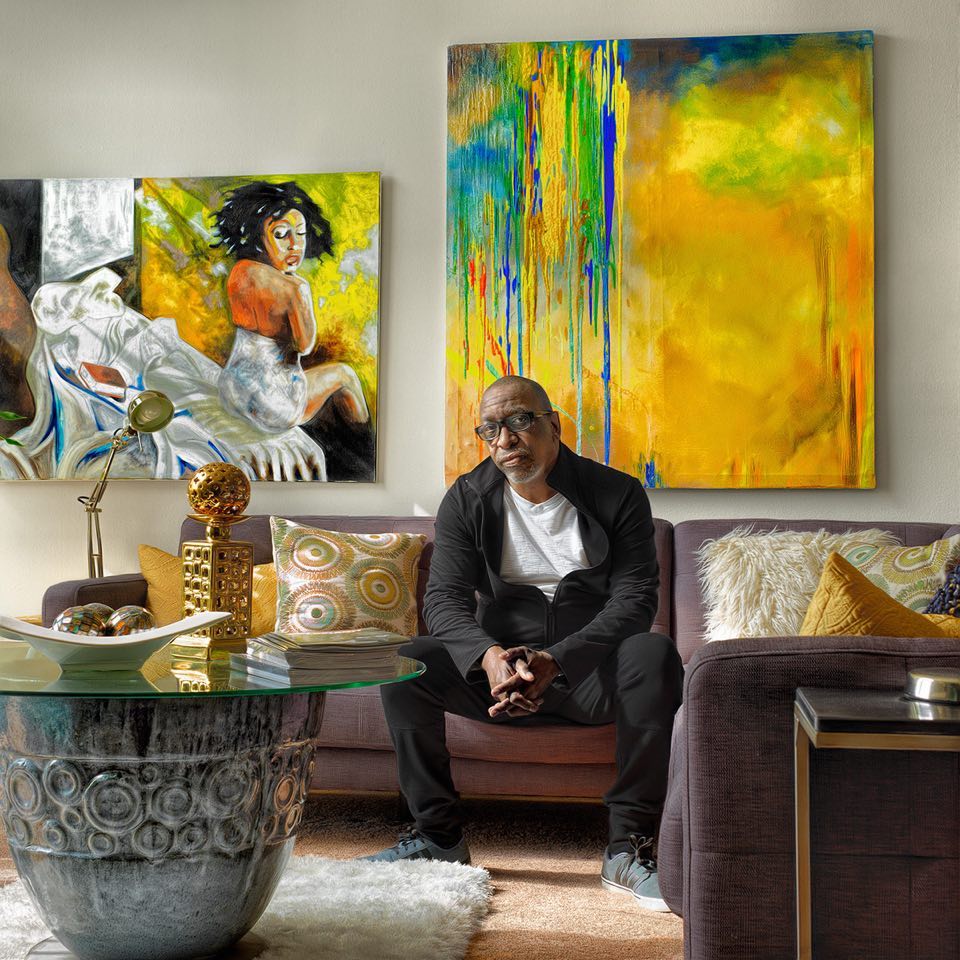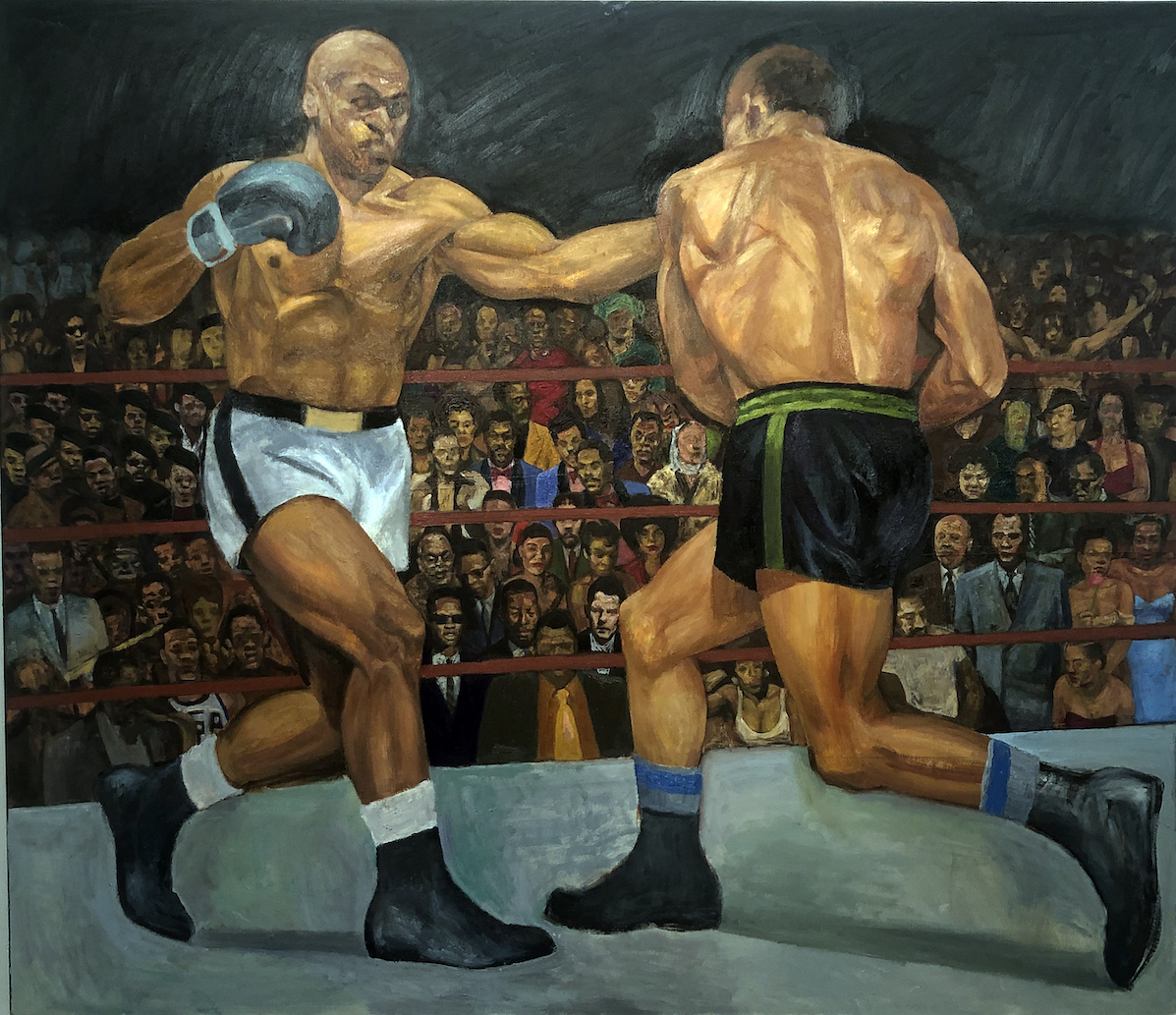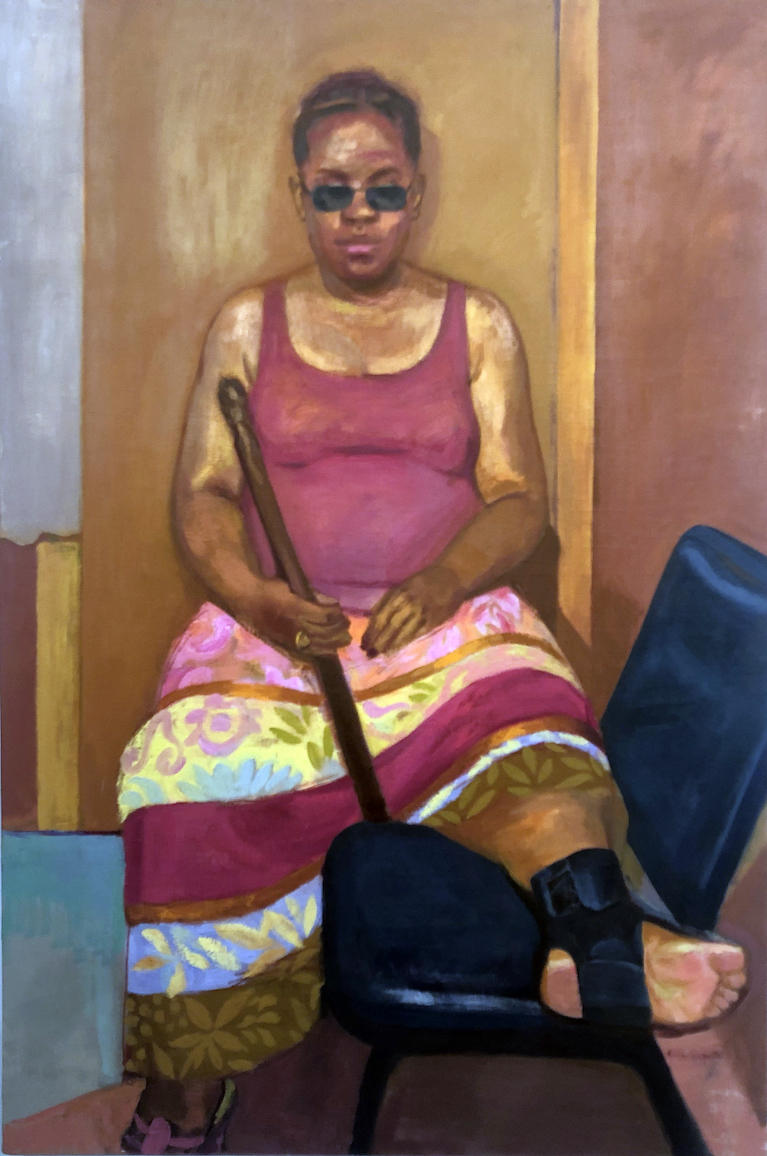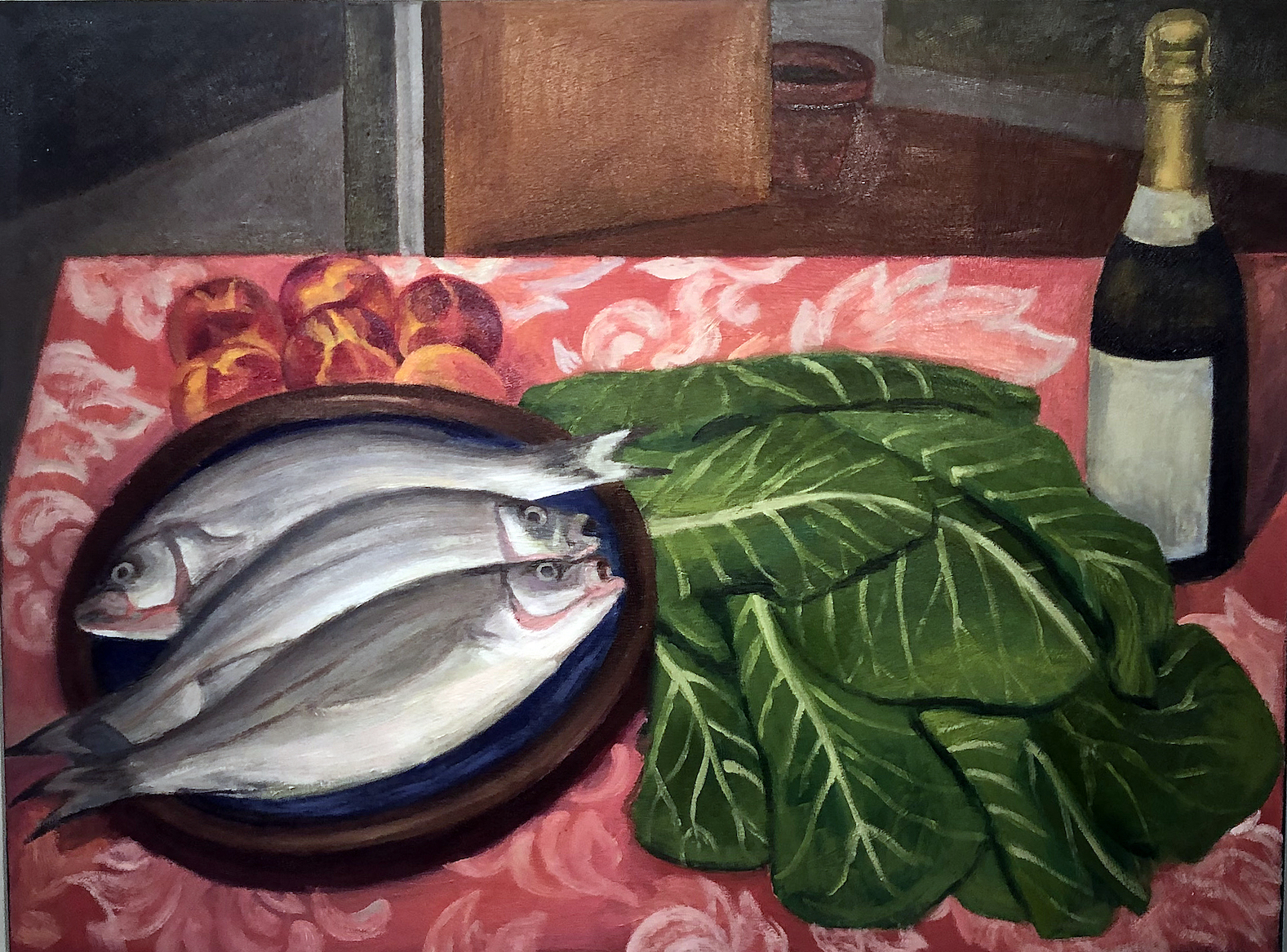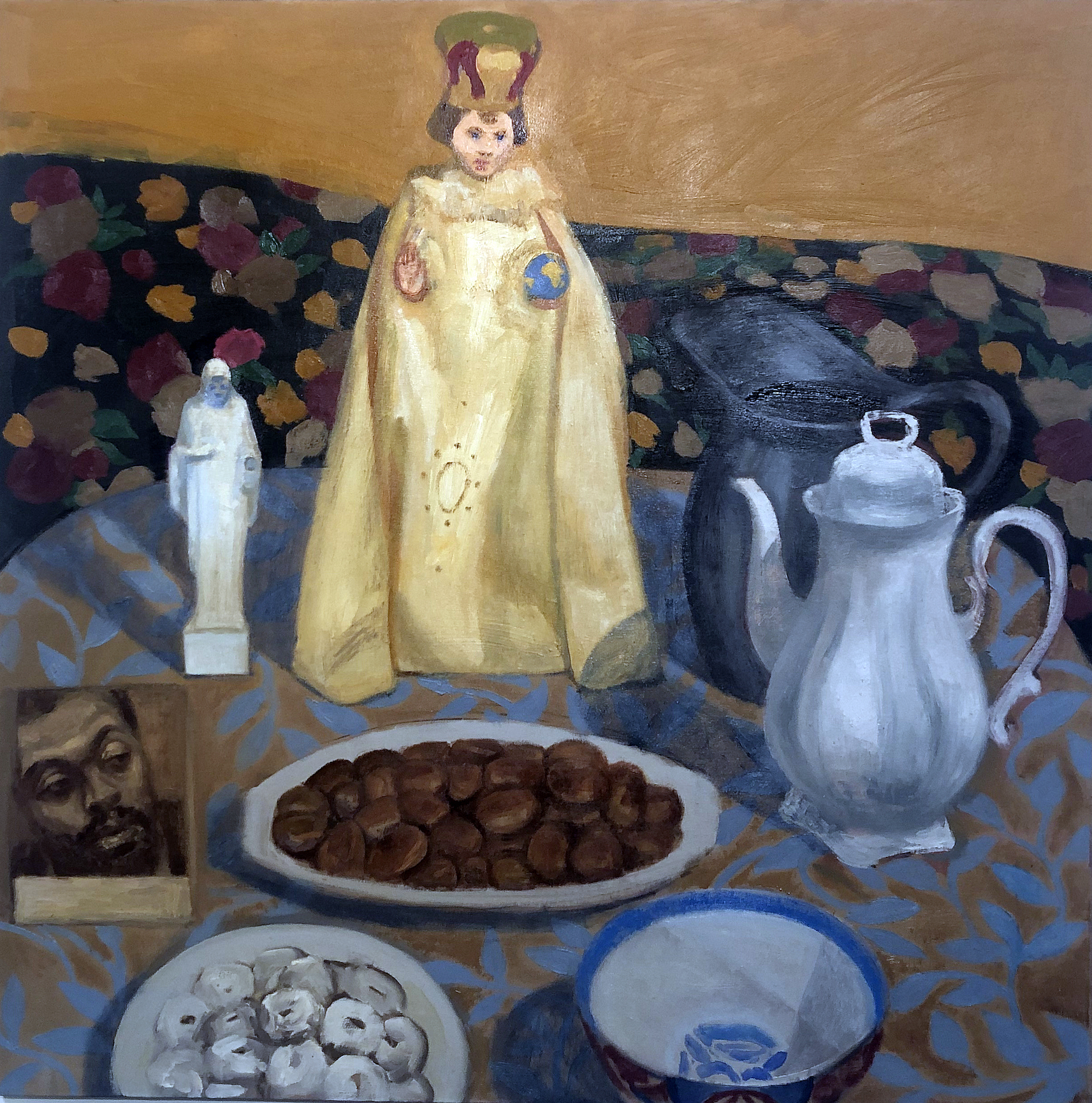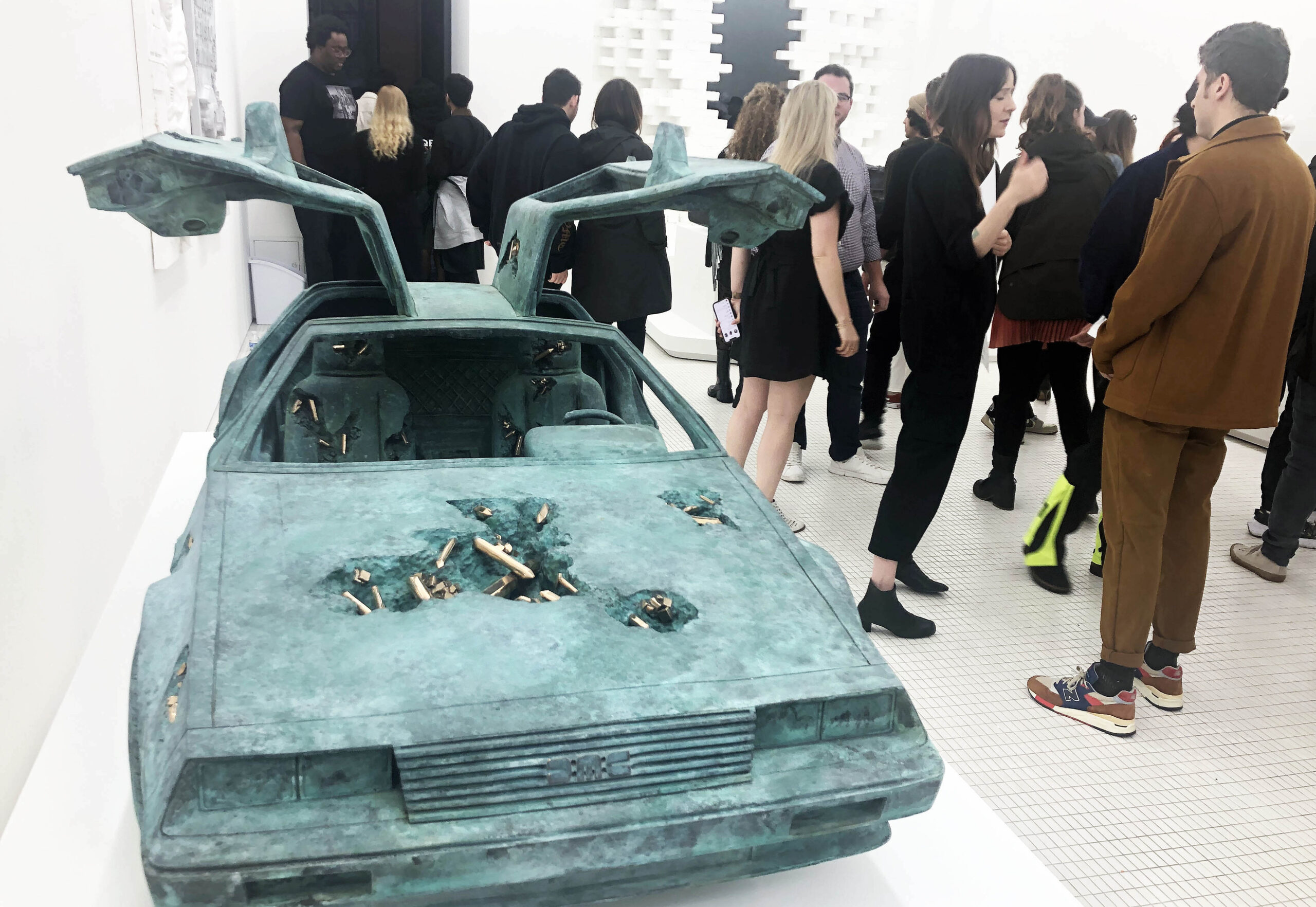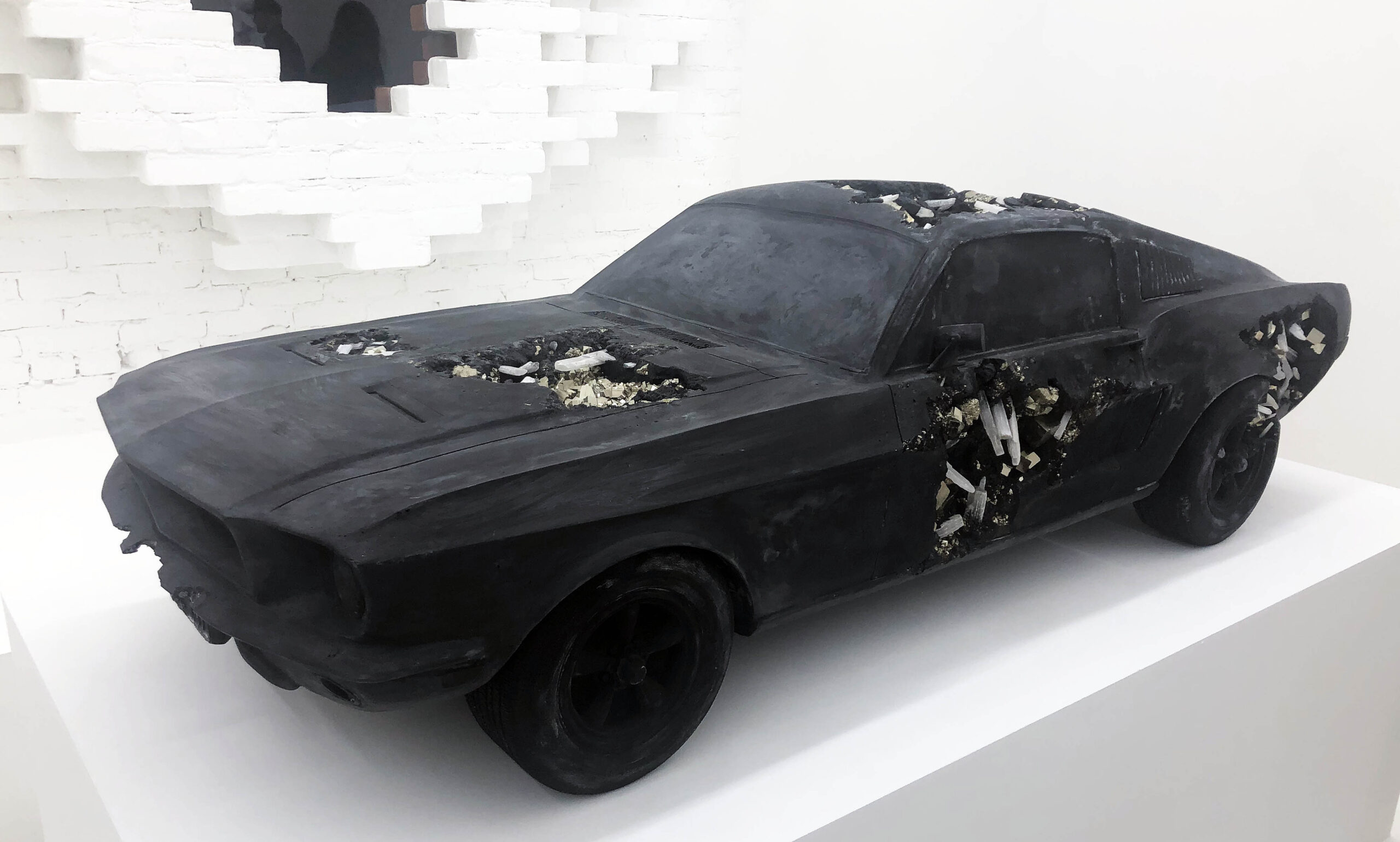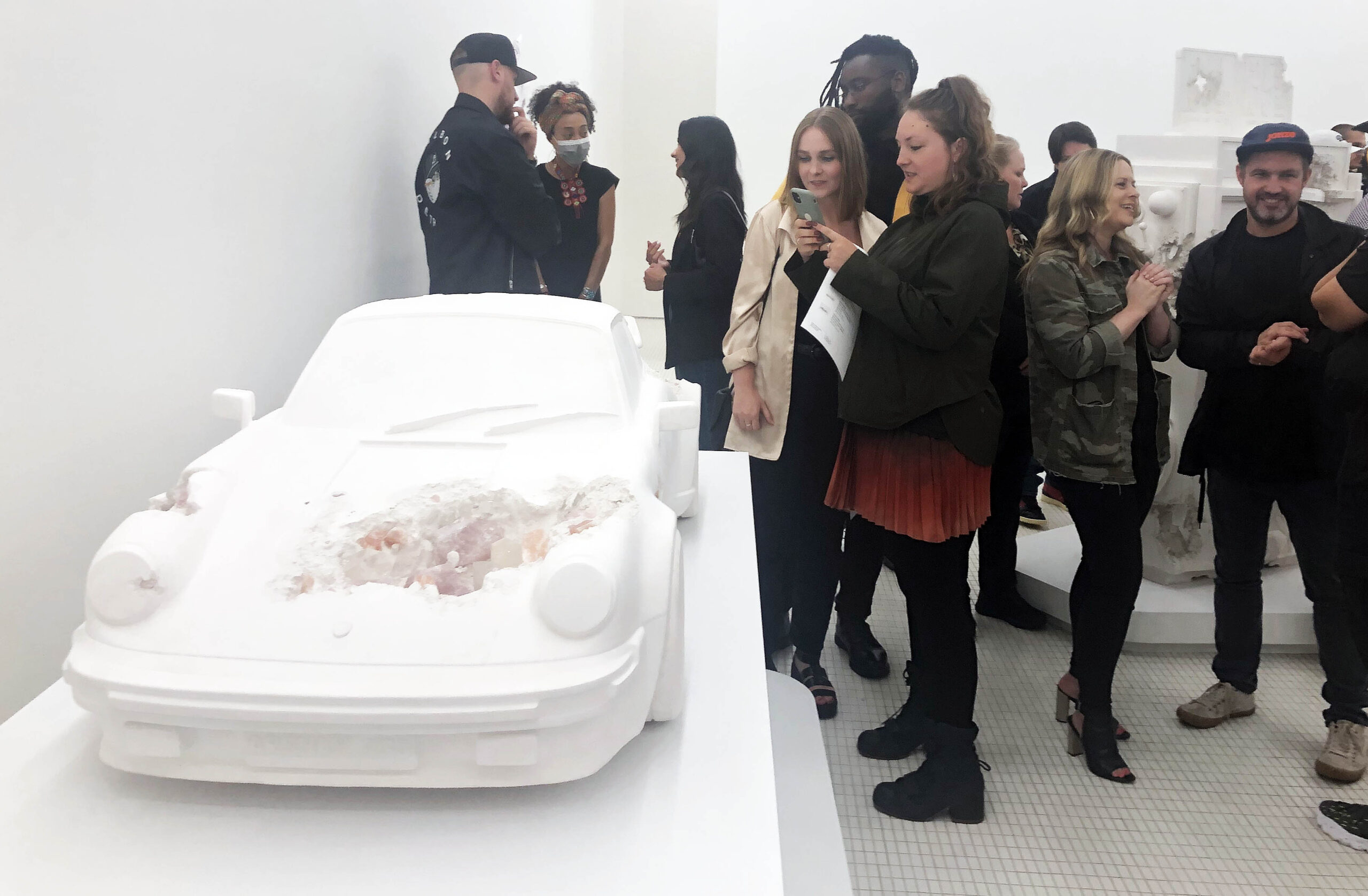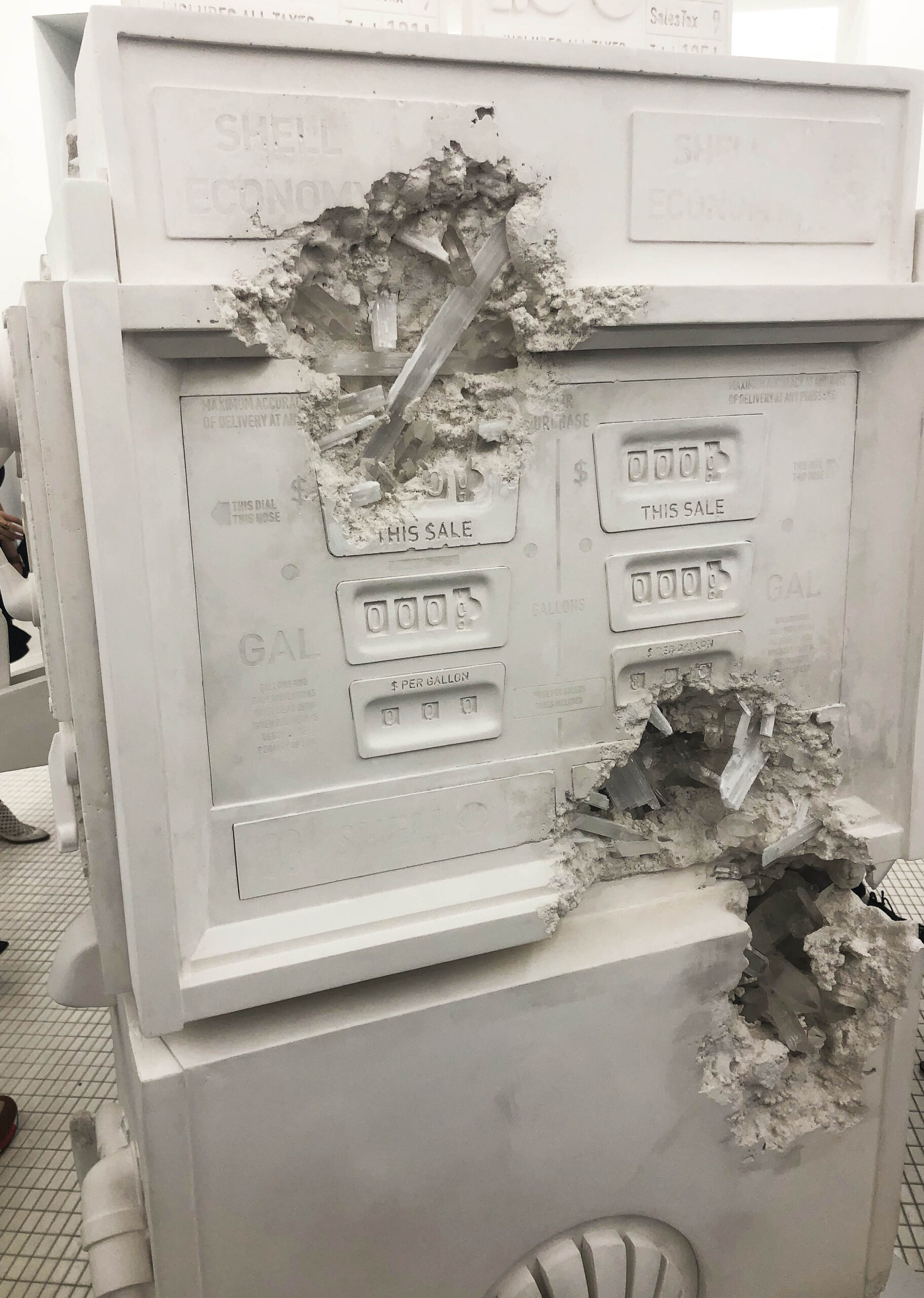The Birmingham Bloomfield Art Center Opens this Fall with Two Female Artists
One of the most prestigious non-profit art centers in Oakland County, the BBAC curates exhibitions in their five spacious galleries, including professional artists and art students taking classes at the art center. These two new exhibitions: Leah Waldo: Memory Gate and Glenna Adkins: Modern Impressions, provide some fresh and accommodating visual art approaches from both of these up-and-coming artists.
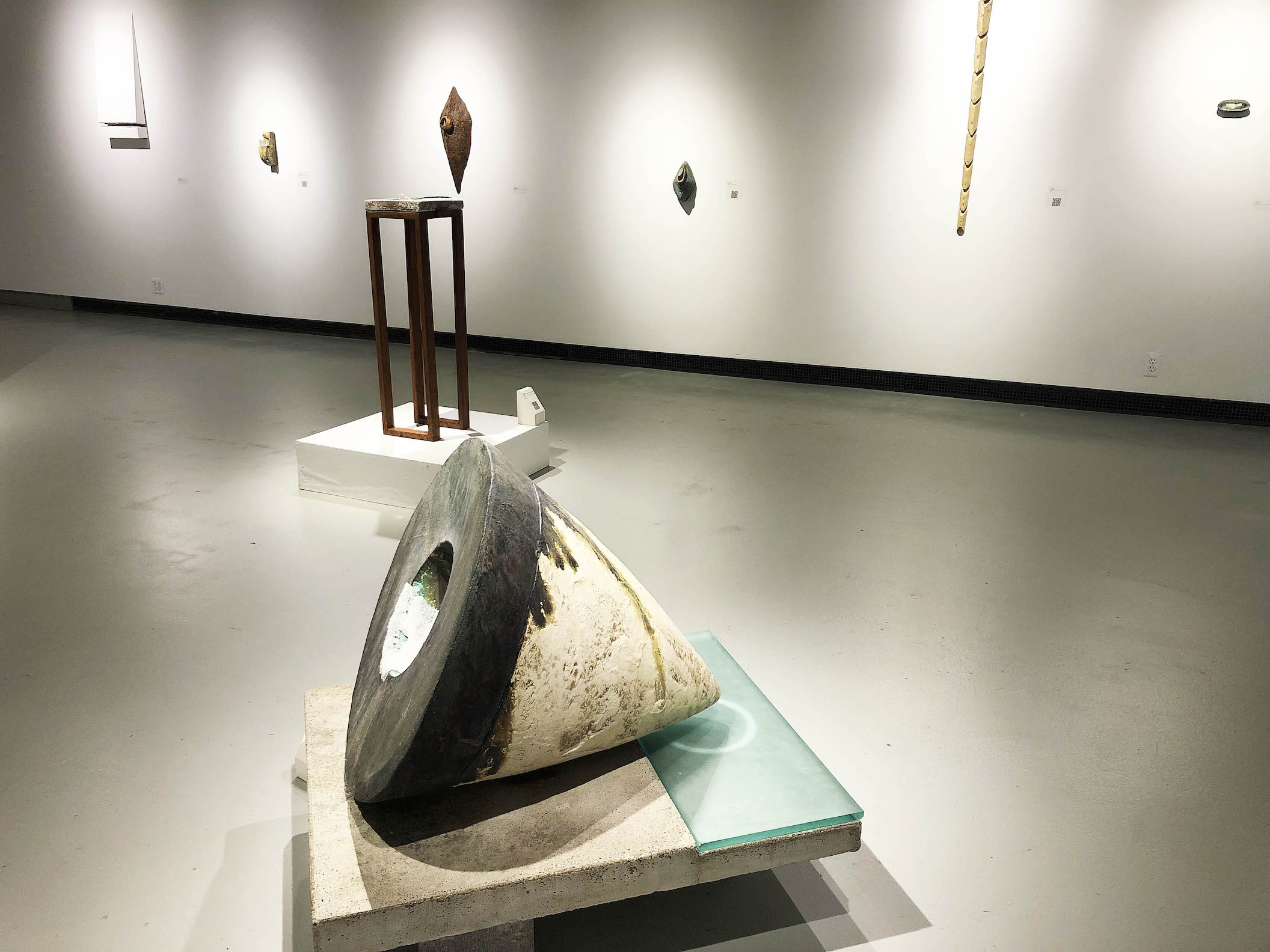
Leah Waldo, Installation image, BBAC 2021
The sculpture of Leah Waldo includes a large variety of materials like clay, glass, wood, and cement. The minimalist forms touch on an assortment of geometric shapes and forms. The reoccurring vertical clay objects dominate many of the clay pieces. Waldo describes her work by saying, “I consider my work to be distilled landscapes – the essence of physical and emotional landscapes infused into an object. Each piece is a little pocket universe, a soft invitation for the viewer to simply inhabit the emotional space and the spirit of raw, pristine nature. Because of my intention, history, and instinct as a healer, the objects and experiences I create are healing spaces. These pieces are invitations to share intimate moments of my life.”
Waldo utilizes a method called glass casting, in which molds are made out of plaster and silica. The molds are then filled with casting rocks, which melt together in the kiln. Waldo likes to melt the rocks, so they just begin to fuse and clump together, a technique she arrived at by experimenting with different casting cycles.

Leah Waldo, Heartopener, Clay, Glass, & Steel
The oblong vertical form in Heartopener is constructed with low-fire terra cotta and as both cast and etched glass elements supported with fabricated steel. This introspective and contemplative clay sculpture achieves a contrast of material juxtaposing the exterior self while the glass represents the interior self.
Leah Waldo lives and works in the Asheville, NC area and earned her degree from the College of Creative Studies.

Glenna Adkins, Installation image, BBAC, 2021
In the Robinson Gallery, Glenna Adkins introduces her work with an exhibition titled Modern Impressions and provides the viewer with a light palette of color and a moving arrangement of abstract shapes and forms. The artist makes her home in Cincinnati, where her longtime studio is located at the Pendleton Art Center. These abstract expressionistic paintings could be viewed as aerial landscapes with deliberate contrast between large masses of color and fine lines.
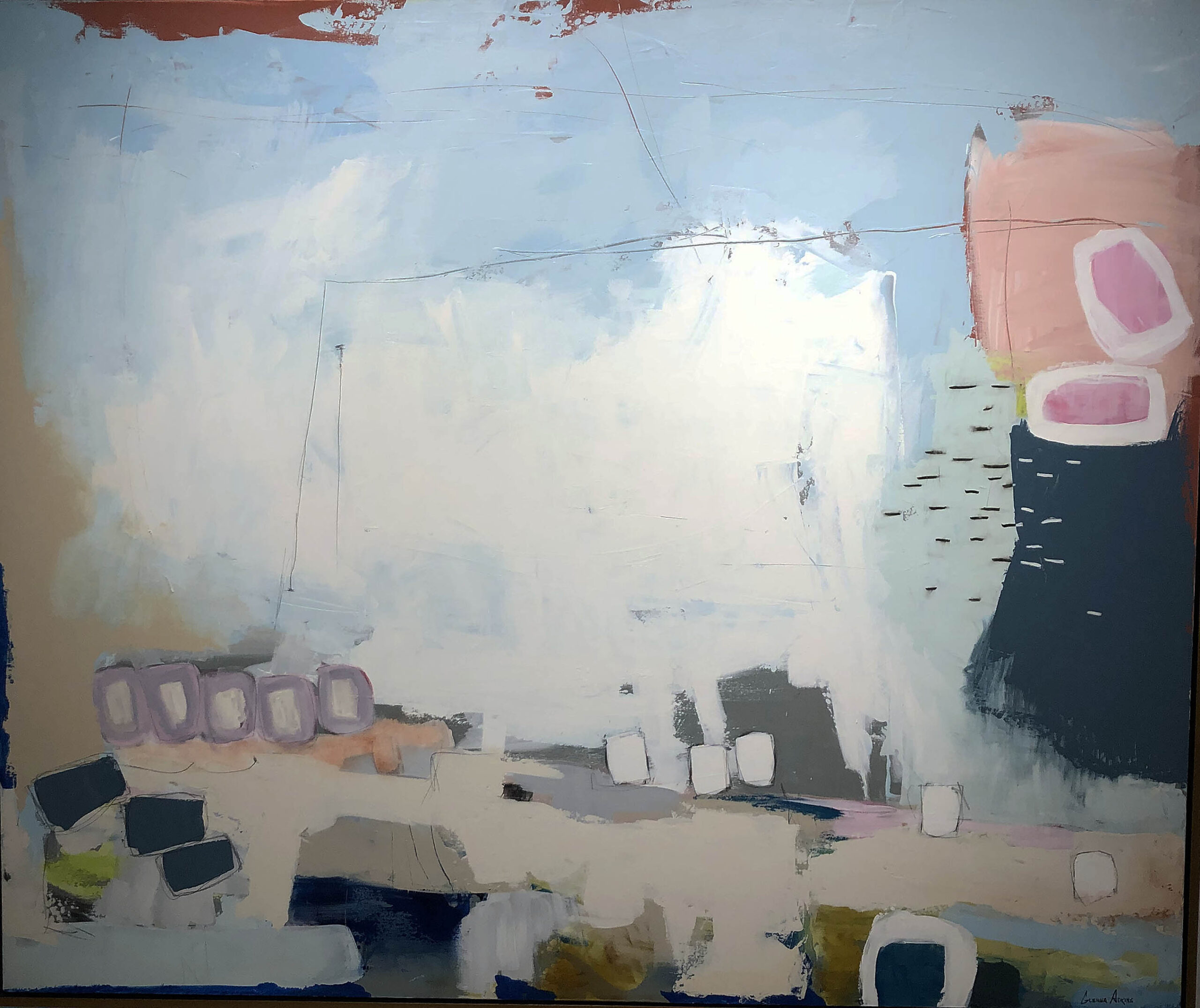
Glenna Adkins, Lucere, Acrylic paint on canvas, graphite.
In the painting Lucere, the work takes on a straightforward landscape painting with a horizon along the bottom and a sky shape dominated by white and blue. Here she lays down a base layer of acrylic paint using a palette knife and brushes, then comes over the top with graphic pencil and oil stick for detail. Glenna’s work has an attraction to designers looking to place a large abstract in a modern setting.
Glenna Adkins earned a Bachelor of Fine Art at the University of Cincinnati’s College of Design, Art, and Architecture.
The Birmingham Bloomfield Art Center, founded in 1957, serves the Detroit region’s visual arts community. The mission is “to connect people of all ages and abilities with visual arts education, exhibition and other creative experiences. The BBAC does this by offering classes, exhibits, workshops and events to the public, and their exhibits are always free and open to the public.”
In addition to the two exhibitions reviewed here, the culinarian turned painter, Mary Wilson, has spent years painting with flavors in her own premier catering company. Mary has found her way from the flavor palate to the artistic palette with an eye for color and contrast. In keeping with having student exhibitions, there is an exhibition of work by the students of Fran Seikaly an artist working with oil, pastel and watercolor.
President and CEO Annie VanGelderen talks about this past year. “Courage has been needed in so many ways this past year! Whether it’s about venturing out, re-connecting with friends and loved ones, or exploring your talents, the BBAC has wonderful opportunities for creativity.”
The Birmingham Bloomfield Art Center exhibitions opened October 1 and runs through November 4, 2021.


